An exercise often done in strategic planning is SWOT: Strengths, Weaknesses, Opportunities, and Threats.
It’s common when we do this exercise for most businesses to include people or their culture for strengths.
Because culture and people are not easily measured, companies choose these as their strengths.
In most instances, however, it’s not easy to find people and a culture that works seamlessly together to deliver uncommon service.
Most often, the service model isn’t right; the company is trying to be good at everything.
Far too frequently, the culture isn’t right.
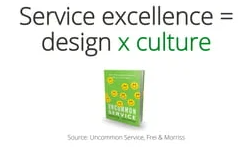 Frances Frei and Ann Morris present culture as the multiplier to achieving Uncommon Service. It’s not enough to design your service model right. Uncommon service is achieved when great organizational design meets a culture of service excellence. Service excellence is a product of design and culture.
Frances Frei and Ann Morris present culture as the multiplier to achieving Uncommon Service. It’s not enough to design your service model right. Uncommon service is achieved when great organizational design meets a culture of service excellence. Service excellence is a product of design and culture.
That’s why achieving Service Excellence is Design X Culture.
Southwest Airlines Culture
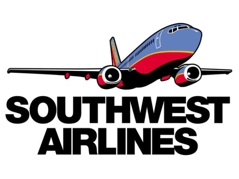 A great example of a culture that works is Southwest Airlines. Pulling off its signature turnaround times requires an exceptionally high level of collaboration across specialists, levels, and functions. Southwest is all about ego-free cooperation. No one is better than anyone else. No one is above doing what needs to be done. Among the most visible expressions of this egalitarian culture is an institution called “team late.” If the plane arrives late, everyone is penalized, and so everyone pitches in with whatever needs to happen, without having to be told.
A great example of a culture that works is Southwest Airlines. Pulling off its signature turnaround times requires an exceptionally high level of collaboration across specialists, levels, and functions. Southwest is all about ego-free cooperation. No one is better than anyone else. No one is above doing what needs to be done. Among the most visible expressions of this egalitarian culture is an institution called “team late.” If the plane arrives late, everyone is penalized, and so everyone pitches in with whatever needs to happen, without having to be told.
It may surprise you to know Southwest has a greater number of unionized employees than any other airline, yet it also has better employee relations than any other airline.
Unions love Southwest because, unlike other airlines, it has never had a layoff.
 Southwest didn’t expand as much as traditional airlines did during good times, which means that it doesn’t need to cut back quite so much during bad times. When I first started as a Scaling Up coach Southwest Airlines was our prime example of Jim Collins' 20 Mile March. Frei and Morris note, “This policy is designed to maintain good employee relationships, and it is these good relationships that allow Southwest to include the team-late provision in employment contracts, as well as put the phrase “and everything else” into all of Southwest’s job descriptions.”
Southwest didn’t expand as much as traditional airlines did during good times, which means that it doesn’t need to cut back quite so much during bad times. When I first started as a Scaling Up coach Southwest Airlines was our prime example of Jim Collins' 20 Mile March. Frei and Morris note, “This policy is designed to maintain good employee relationships, and it is these good relationships that allow Southwest to include the team-late provision in employment contracts, as well as put the phrase “and everything else” into all of Southwest’s job descriptions.”
For Southwest whatever needs doing, they simply do it, without having to locate, for instance, a qualified master electrician to screw in a light bulb. This chain of interlocking trade-offs—expansion limits to preserve job stability in return for flexibility in job descriptions—all leads directly to faster turnaround, the key to Southwest’s success.
The Building Blocks of Culture
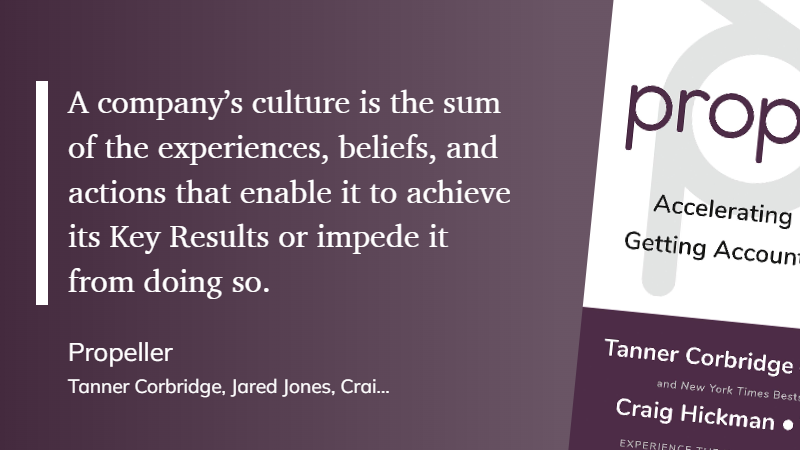 There are many definitions for culture. The authors share, “the right culture is not a universal concept. Your right culture is a distinct asset that must be consistent with your organization’s service model.”
There are many definitions for culture. The authors share, “the right culture is not a universal concept. Your right culture is a distinct asset that must be consistent with your organization’s service model.”
A great service organization needs to get both right, the service design and the culture that animates it.
Both must be pointing in the same direction; toward the outputs your business identifies as critical to your organization’s success.
When business owners fail to believe in the value of culture, it can be traced to their failure to follow the three distinct patterns in an organization's relationship to culture, Frances Frei and Ann Morris identify in Uncommon Service: How to Win by Putting Customers at the Core of Your Business.
 Organizations that get this right demonstrate high levels of the following:
Organizations that get this right demonstrate high levels of the following:
Clarity: knowing exactly what kind of a culture you want to build, and how this culture is critical to achieving your most important performance objectives. Uncommon Services example (Tony Hsieh and Zappos) is a bit outdated, yet the example of their hiring practices, shared in this 2014 blog, Zappos Employees Live the Brand – Core Values – LV Growth Summit, brings life to how passionate the company was about selecting the right employees to live their values. Why Zappos Pays New Employees to Quit–And You Should Too from 2008 further clarifies their hiring practices.
Signaling: relentlessly communicating the organization’s core values, particularly in moments when people are likely to be most receptive to these messages, such as during recruiting and orientation. David Neeleman, when he started JetBlue famously flew as a crew member on his airline once a month. He put on an apron to serve coffee. Every time he did this, he electrified passengers on the flight where he was serving, but he also sent a buzz throughout the entire organization. One of my customers gives Core Value awards at their weekly meetings. Most often these are driven by the leadership team, however, anyone in the organization can identify and give an award (which entitles the recipient to a modest gift card) to anyone they recognize to living their Core Values
Consistency: reinforcing the culture at every turn and rooting out cultural violations, that is, misalignment between the desired culture and organizational strategy, structure, and operations. CEO Glenn Forbes states, “If you’ve just communicated a value but you haven’t driven it into the operations, into the policy, into the decision making, into the allocation of resources, and ultimately into the culture of the organization, then it’s just words.” At the Mayo Clinic, the staff has a well-worn phrase that’s tossed out whenever the threat of a cultural break creeps into a decision: “Is this right for the patients or not?”
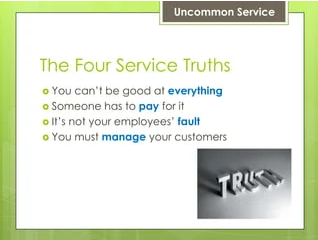 Great service organizations tend to do three things well in their relationship with culture. They have deep clarity about the organizational culture they must cultivate to compete and win. They are effective in signaling the norms and values that embody that culture. They work hard to ensure cultural consistency, and alignment between the desired culture and organizational strategy, structure, and operations.
Great service organizations tend to do three things well in their relationship with culture. They have deep clarity about the organizational culture they must cultivate to compete and win. They are effective in signaling the norms and values that embody that culture. They work hard to ensure cultural consistency, and alignment between the desired culture and organizational strategy, structure, and operations.
To create an environment where everyone is inspired to give their best, contact Positioning Systems to schedule a free exploratory meeting.
Turn your team into a growth organization.
Growth demands Strategic Discipline.
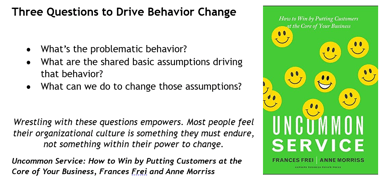 Behavior is what needs to change in most organizations. Uncommon Service provides three questions to ask to empower organizations to change. We’ll also look at insights from Propeller: Accelerating Change by Getting Accountability Right about changing beliefs and rewriting your organization's narrative in our next blog.
Behavior is what needs to change in most organizations. Uncommon Service provides three questions to ask to empower organizations to change. We’ll also look at insights from Propeller: Accelerating Change by Getting Accountability Right about changing beliefs and rewriting your organization's narrative in our next blog.
Building an enduring great organization requires disciplined people, disciplined thought, disciplined action, superior results, producing a distinctive impact on the world.
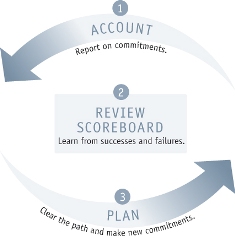 Discipline sustains momentum, over a long period of time, laying the foundations for lasting endurance.
Discipline sustains momentum, over a long period of time, laying the foundations for lasting endurance.
A winning habit starts with 3 Strategic Disciplines: Priority, Metrics, and Meeting Rhythms. Forecasting, accountability, individual, and team performance improve dramatically.
Meeting Rhythms achieve a disciplined focus on performance metrics to drive growth.
Let Positioning Systems help your business achieve these outcomes on the Four most Important Decisions your business faces:
|
DECISION |
RESULT/OUTCOME |
|
PEOPLE |
|
|
STRATEGY |
|
|
EXECUTION |
|
|
CASH |
|
Positioning Systems helps mid-sized ($5M - $500M+) businesses Scale-UP. We align your business to focus on Your One Thing! Contact dwick@positioningsystems.com to Scale Up your business! Take our Four Decisions Needs Assessment to discover how your business measures against other Scaled Up companies. We’ll contact you.
NEXT BLOG – How to Change Your Organizations Behavior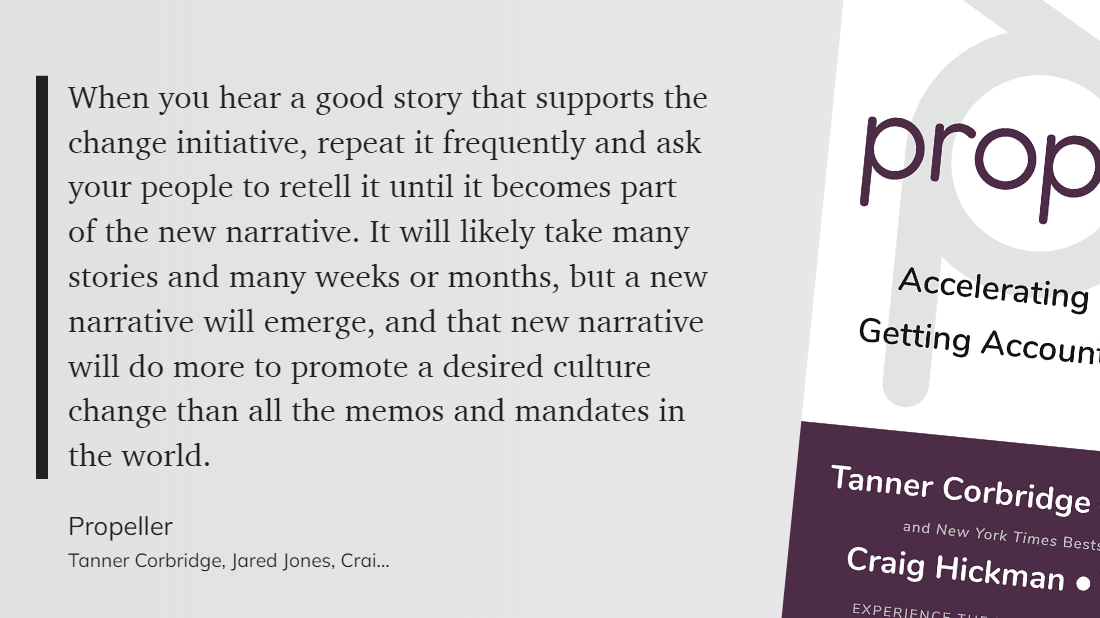






.jpeg?width=150&height=135&name=Hand%20with%20marker%20writing%20the%20question%20Whats%20Next_%20(1).jpeg)

